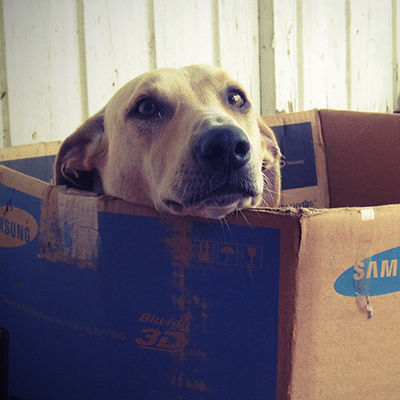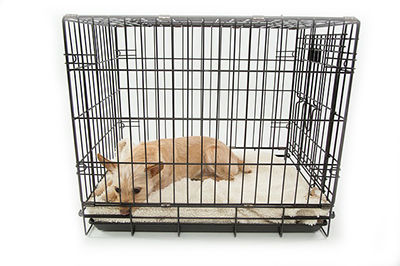New House, Same Dog: How to Move with Your Furry Friend
September 2, 2017

So the boxes have all been packed, the movers booked, but now moving day has arrived and your dog is a nervous wreck. Moving is a high stress event for everyone involved, but for your dog it may feel like the end of the world as they know it. Dogs see the life they’ve known being packed up around them and there’s no way for you to explain to them what is going on. So how do you comfort your furry friend on this new adventure?
START PREPPING EARLY!
Although you can do a lot to help your dog on the day of, if you start early you’ll save both of you a lot of trouble. Start letting your dog get accustomed to suitcases and boxes early on. This way they don’t associate the chaos with abandonment or change. If your move involves a long trip, get your dog used to their crate or to being in your car. If you’re moving nearby, take the time to introduce your dog to the new neighborhood early—walks and runs in nearby dog parks mean that when you pull up to the new place, they’ll associate it with good times.
MOVING DAY

Moving day is chaotic for everyone. Try to find a quiet and safe space for your dog to spend the day as movers take your things; this might be a friend’s house or doggy day care, or even just a room that they like in your old home. This way they don’t get too worked up by the chaos going on around them. Put your dog in his crate last so that he doesn’t overheat in the car and make sure to put a blanket and some of his favorite toys in there with him—having familiar scents will make the car ride feel less scary.
HELPING THEM ADJUST TO THE NEW HOME
When you get to the new place, try to make the first introduction as smooth as possible. Check the place for hazards first and then allow your dog to explore fully. It can be useful to put treats in each room, or favorite toys and food puzzles. These pieces of stimulation will help your dog associate the new home with things he likes. If your dog is still feeling anxious, take him on a run or play with him at home until he tires out—the more mental and physical stimulation the better. If possible, keep your routine as stable as possible; changing up walk and food times when you’ve just moved can make your dog confused and uneasy in the new home.